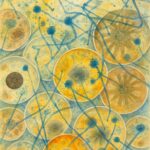Link to Pubmed [PMID] – 20201042
Eur. J. Immunol. 2010 May;40(5):1244-54
The Drosophila Toll-signaling pathway controls the systemic antifungal host response. Gram-negative binding protein 3 (GNBP3), a member of the beta-glucan recognition protein family senses fungal infections and activates this pathway. A second detection system perceives the activity of proteolytic fungal virulence factors and redundantly activates Toll. GNBP3(hades) mutant flies succumb more rapidly to Candida albicans and to entomopathogenic fungal infections than WT flies, despite normal triggering of the Toll pathway via the virulence detection system. These observations suggest that GNBP3 triggers antifungal defenses that are not dependent on activation of the Toll pathway. Here, we show that GNBP3 agglutinates fungal cells. Furthermore, it can activate melanization in a Toll-independent manner. Melanization is likely to be an essential defense against some fungal infections given that the entomopathogenic fungus Beauveria bassiana inhibits the activity of the main melanization enzymes, the phenol oxidases. Finally, we show that GNBP3 assembles “attack complexes”, which comprise phenoloxidase and the necrotic serpin. We propose that Drosophila GNBP3 targets fungi immediately at the inception of the infection by bringing effector molecules in direct contact with the invading microorganisms.

